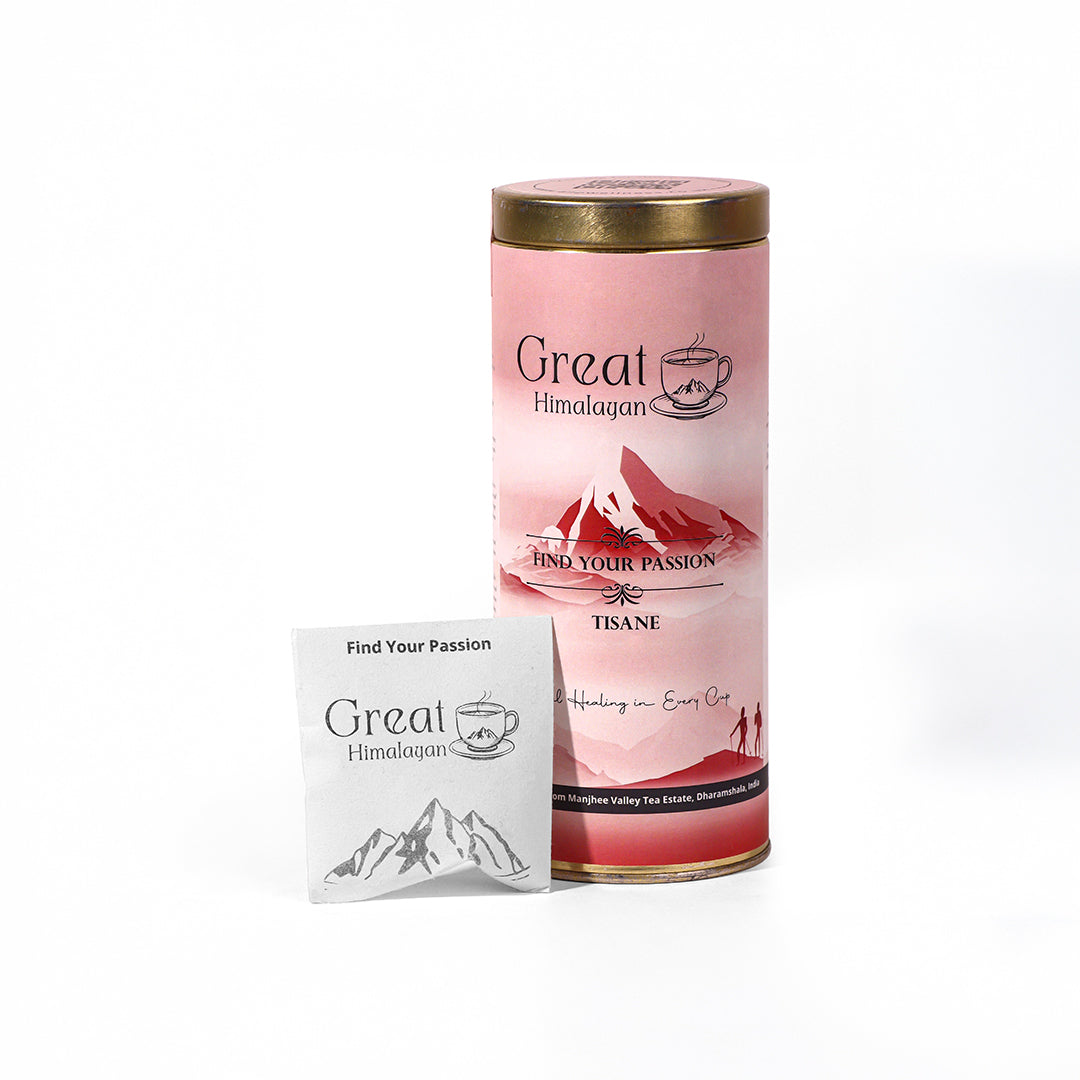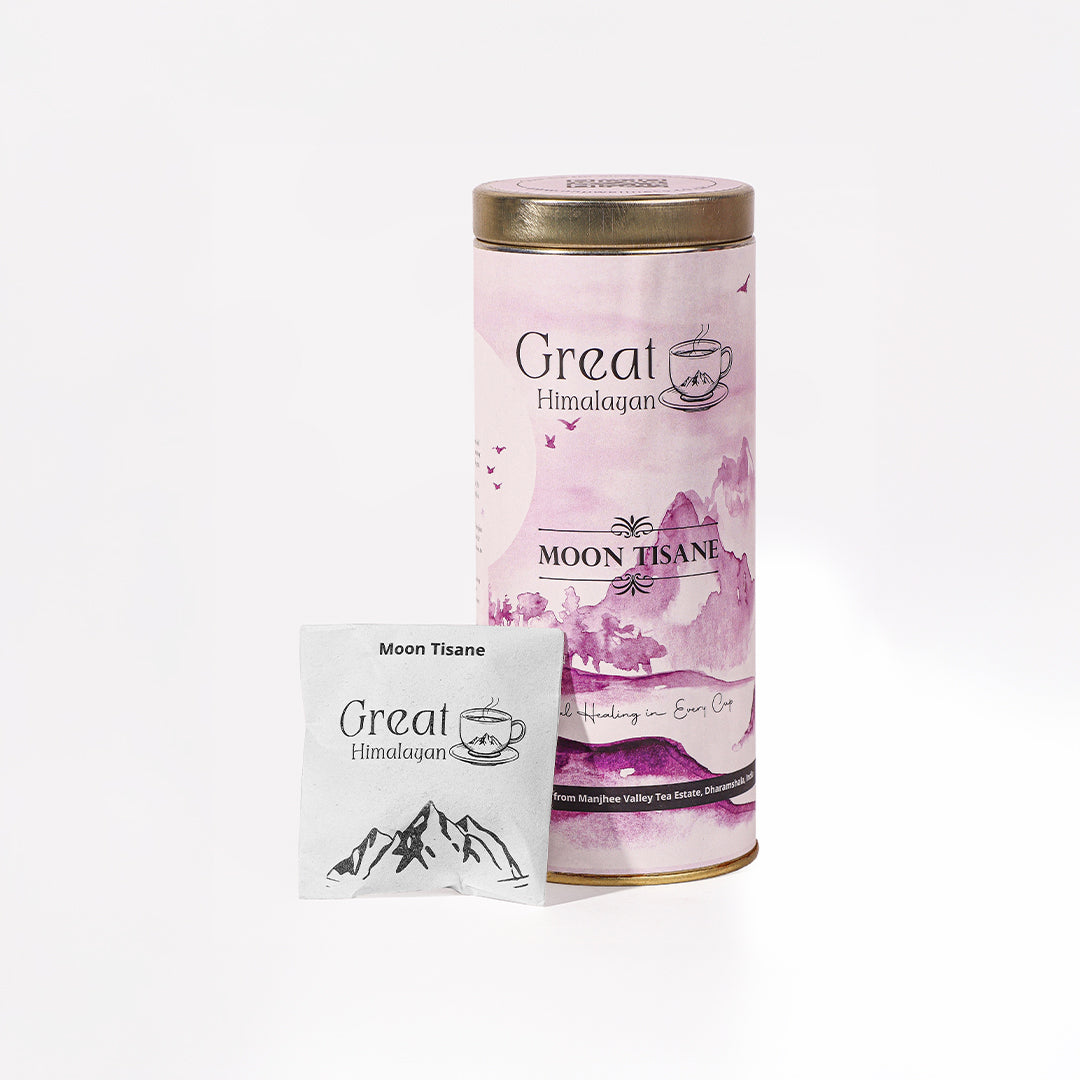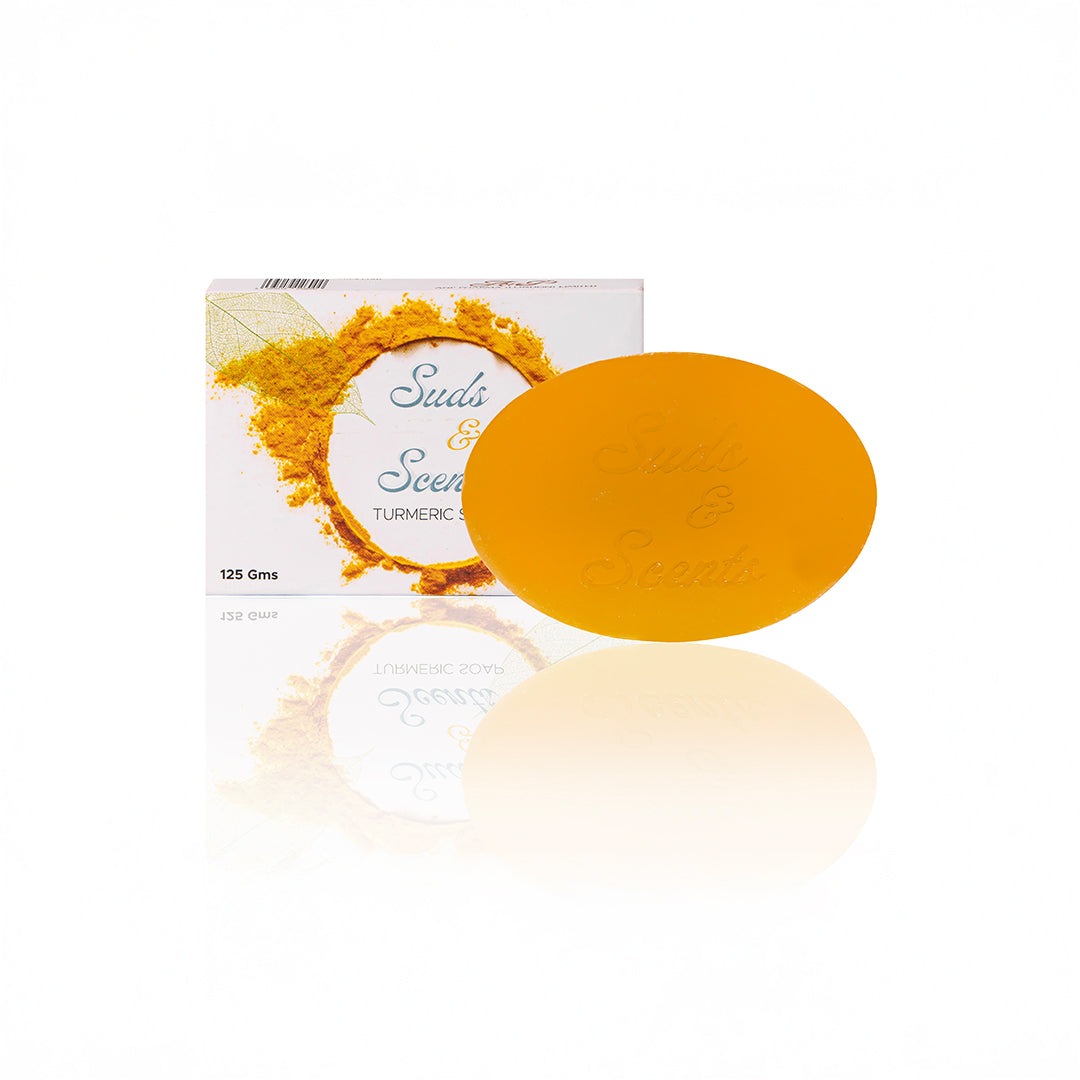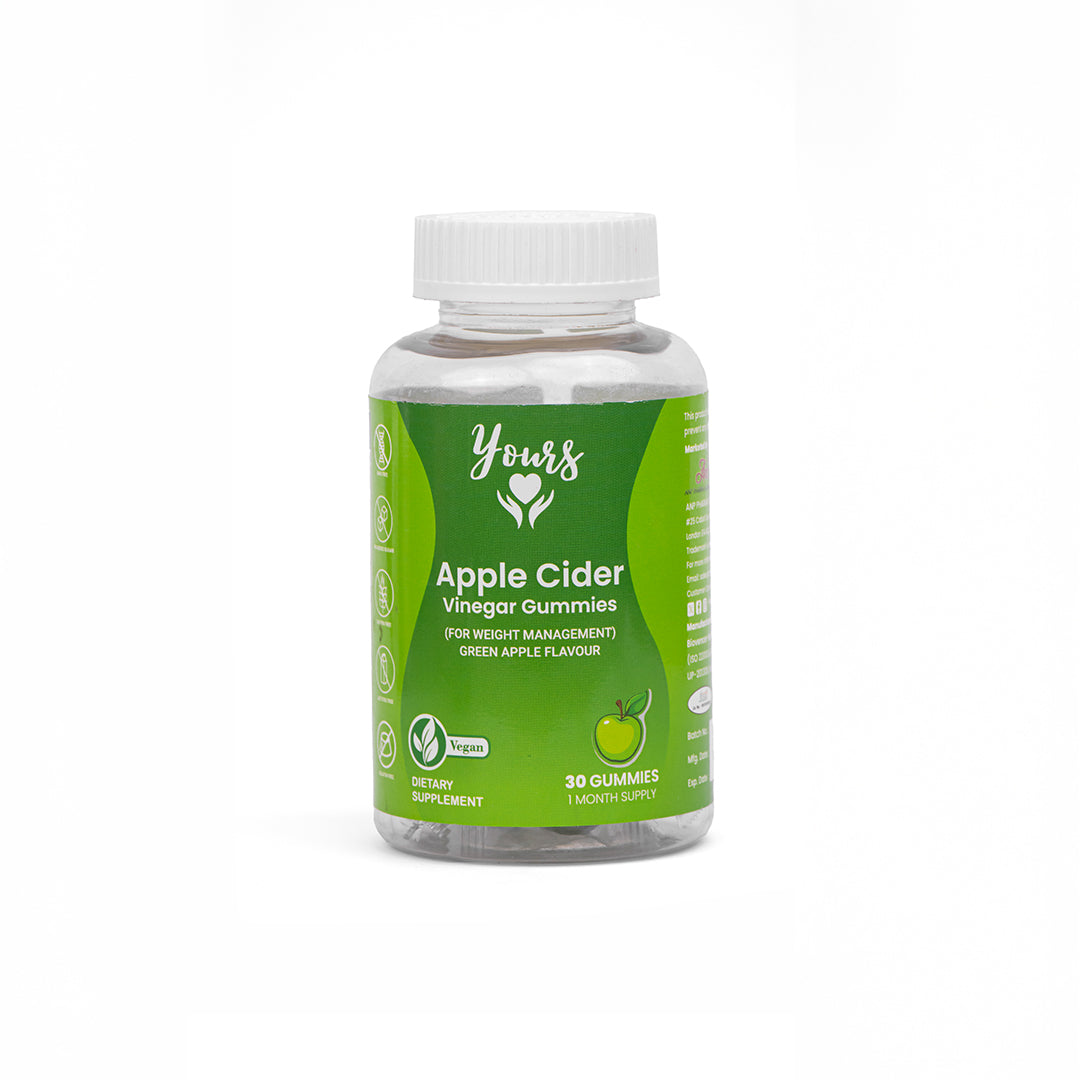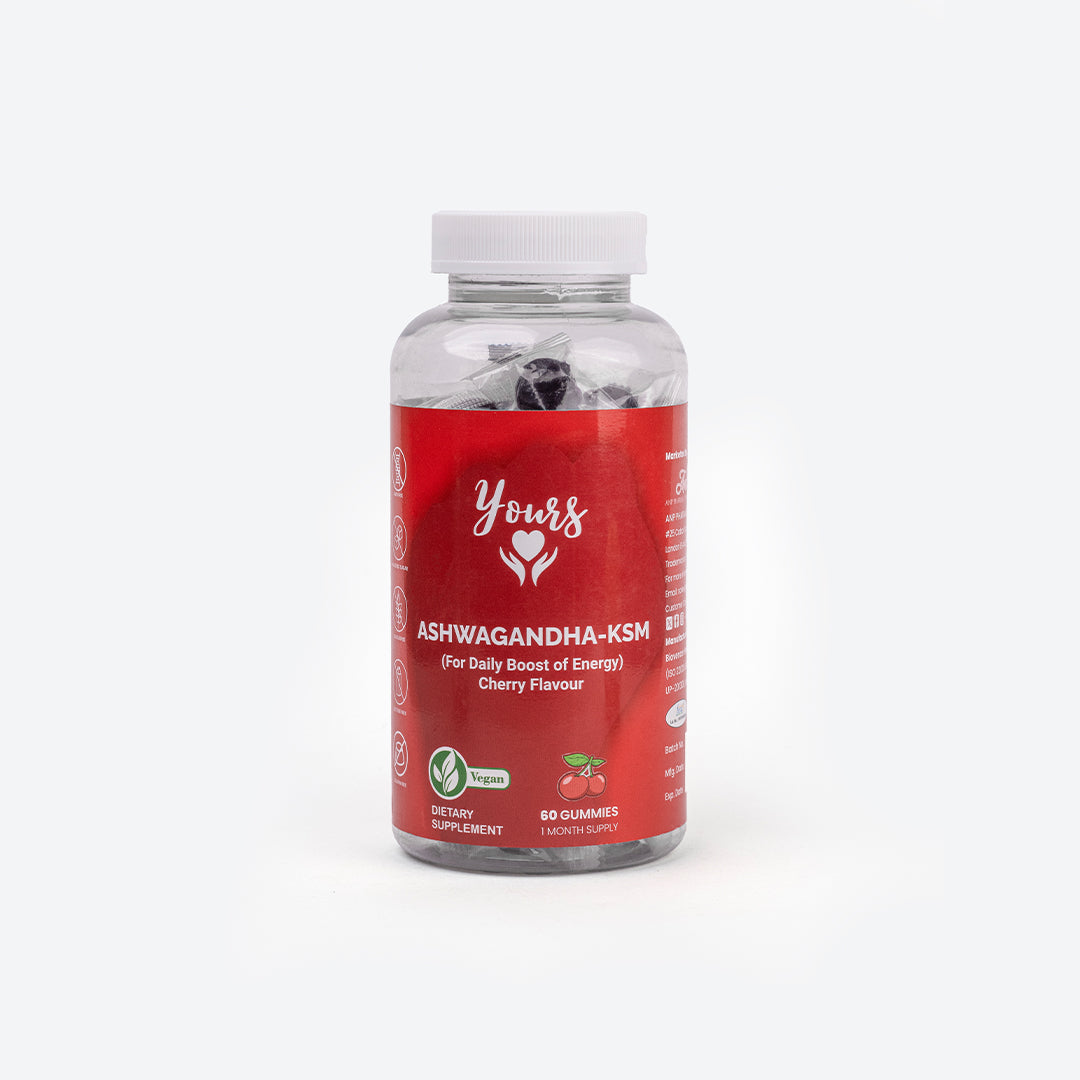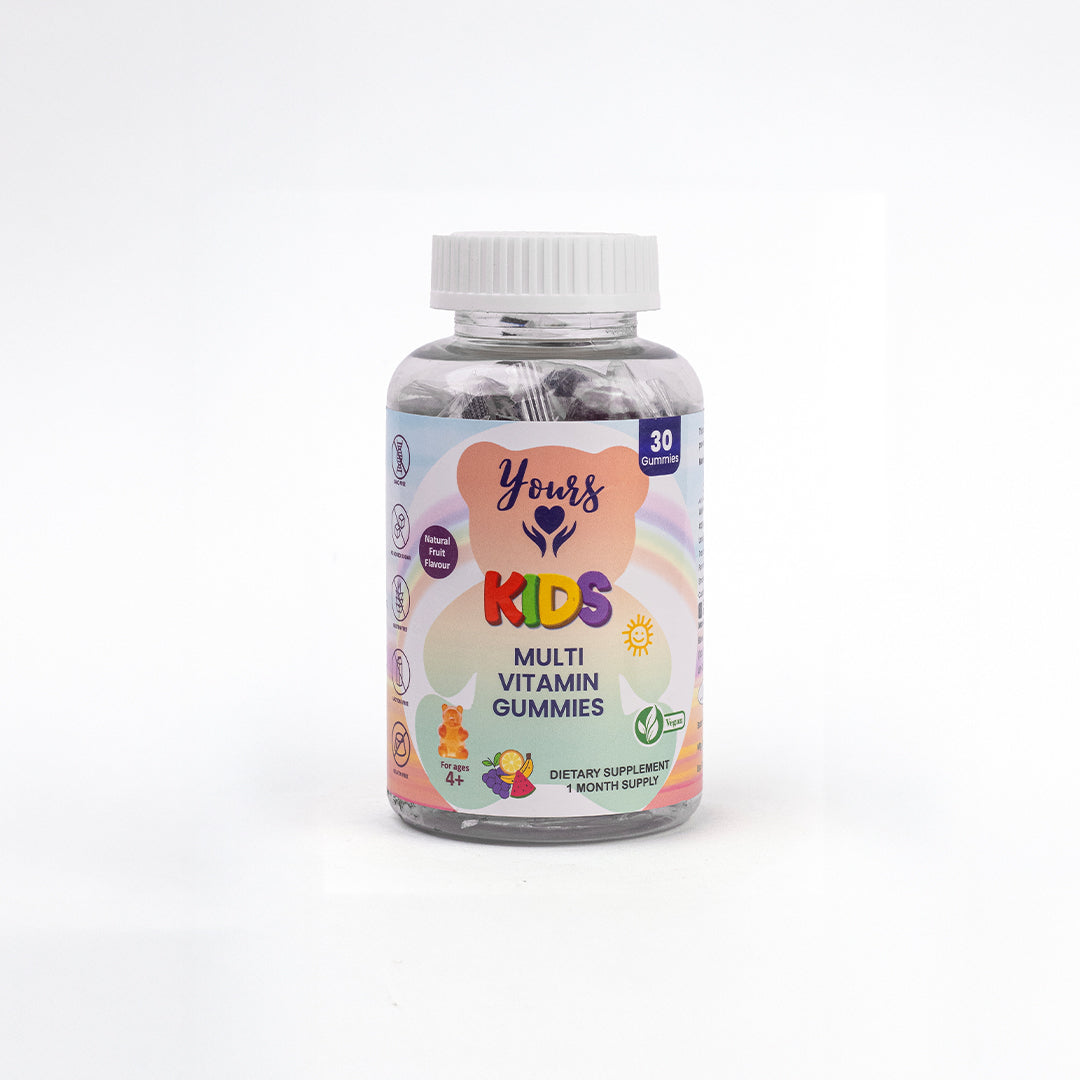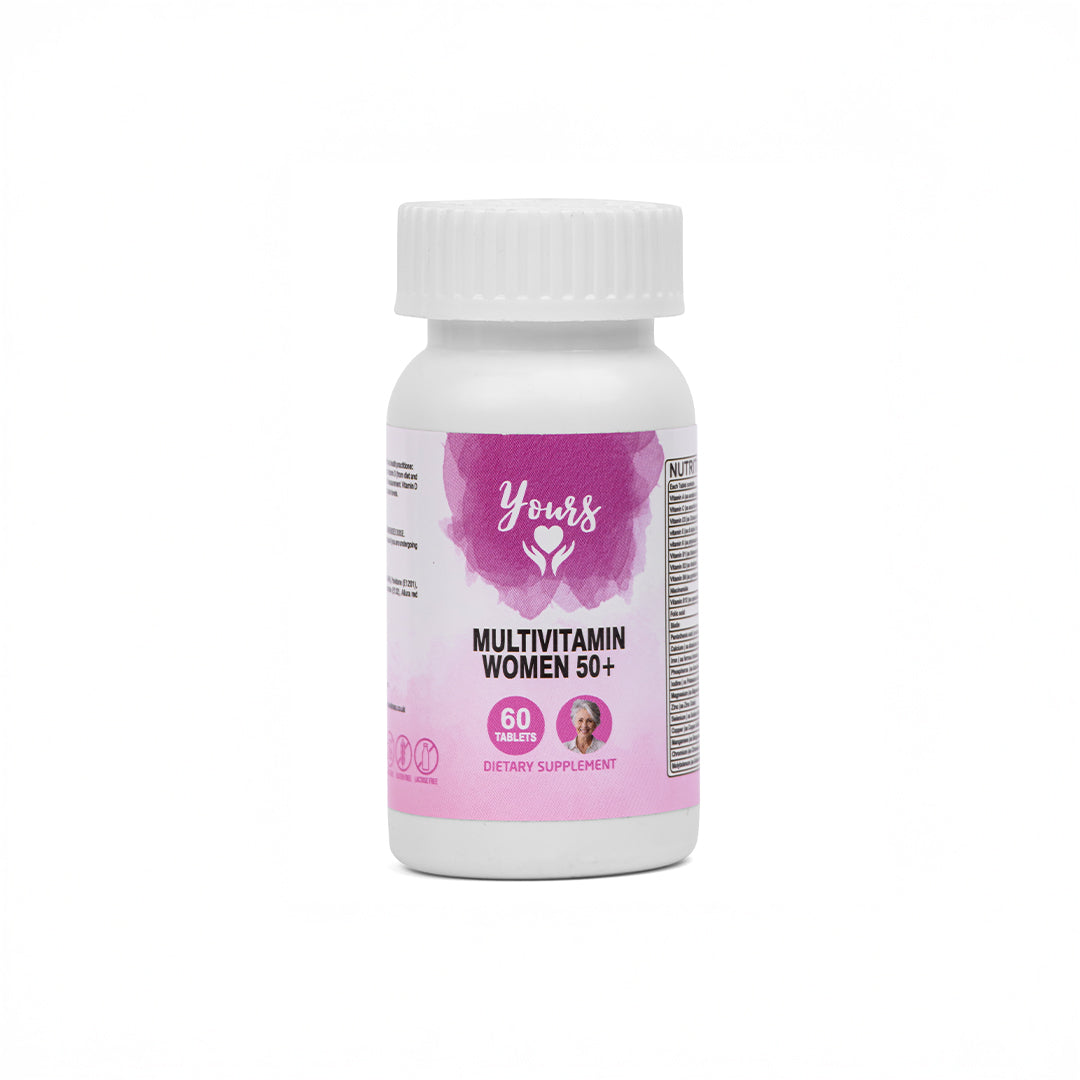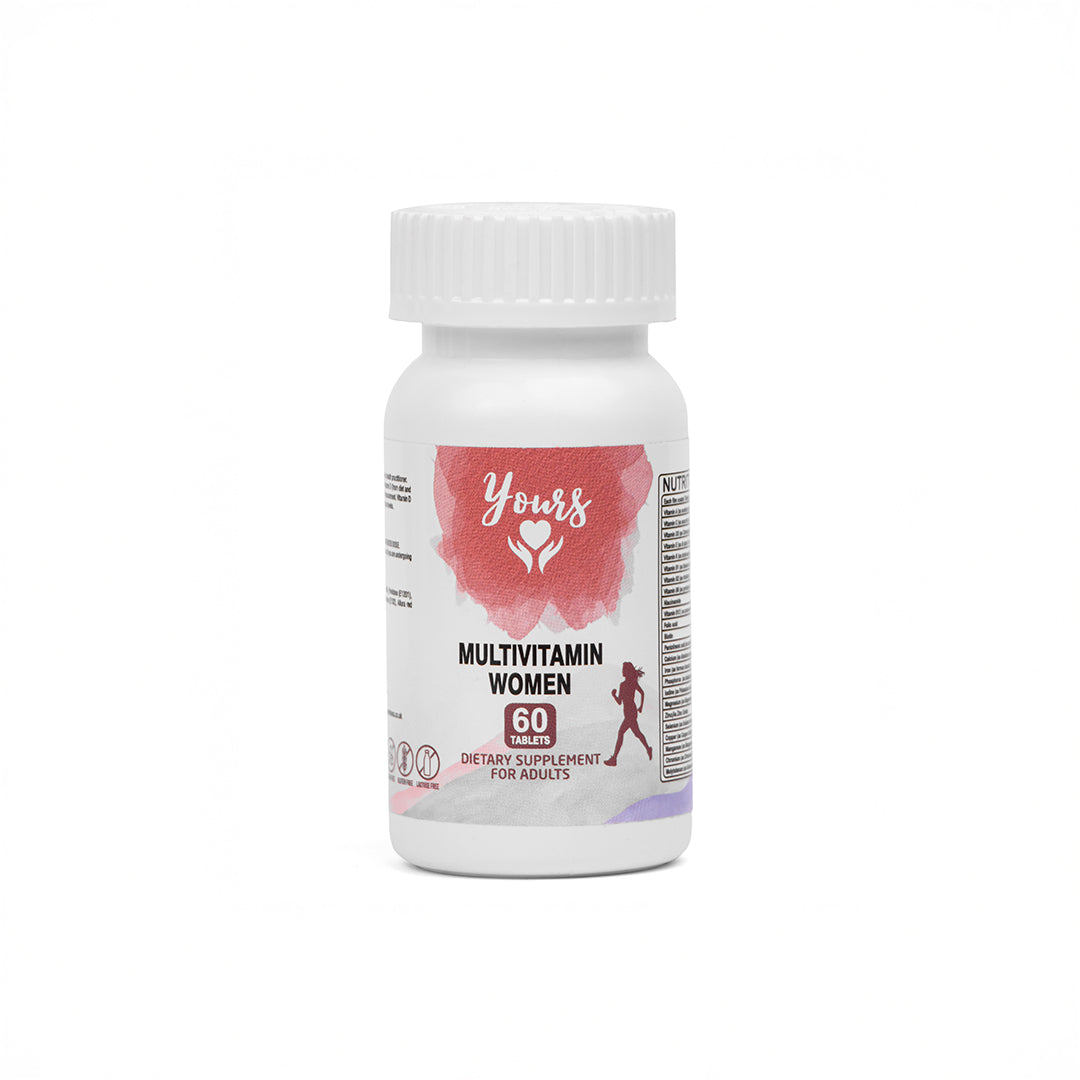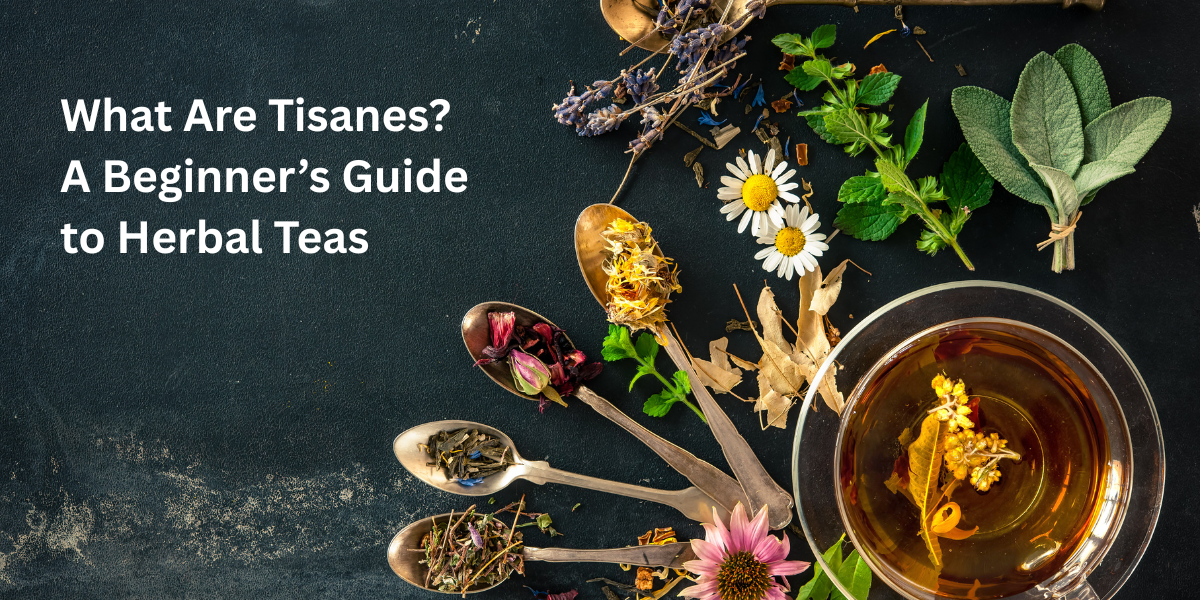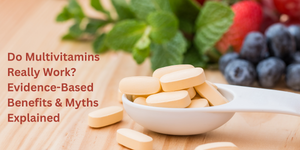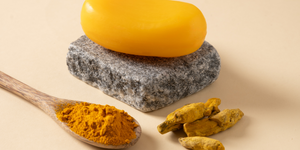From nights in to all the trendy cafes in London and beyond, herbal teas are having quite the moment here in the UK. Increasingly, people are seeking out caffeine-free options that are not only tasty but also promote wellness in a variety of ways. With all of these herbal infusions, there’s one term that often trips up beginning tea drinkers—tisanes.
Are they an herbal tea, or is there more to the name? To do this, we first have to understand what tisanes are in the first place and how they’re different from traditional tea, as well as why health-conscious consumers across the UK are making them a regular part of their wellness routines.
What Are Tisanes? Understanding the Basics
At its most basic, a tisane is any infusion from herbs, flowers, fruits, or spices that doesn't involve the traditional tea plant (Camellia sinensis). Which is to say: Unlike black tea, green tea, and white tea (which are all harvested from the same plant), tisanes belong in another camp altogether.
They’re like a medicinal herb, soothing and aromatic, often full of beneficial compounds. Health benefits: Tisanes are naturally caffeine-free, which enables you to relax without any disruption to your sleep in the evening. Common examples include chamomile, peppermint, hibiscus, rooibos, and ginger infusions.
The tisanes shine in their adaptability. There’s a tisane for nearly every mood, season, or health goal, where each herb or fruit has its unique flavor profile and benefits. Whether you’re looking to relax after a tough day or need help thrusting your digestion into gear, or even if you just want something tasty to drink, tisanes provide an all-natural alternative.
Tea Versus Tisane
While the terms “tea” and “tisane” are frequently used interchangeably, they aren’t actually the same. Black, green, oolong, and white traditional teas all derive from the Camellia sinensis plant. Tisanes, however, are made from herbs, flowers, fruits, or roots and spices. It is this main difference that also differentiates them when it comes to taste, nutrients, and caffeine levels.
Origin
Tea only comes from the tea plant, while tisanes can be made from nearly any plant, leading to an abundance of flavours and effects.
Caffeine Content
Oh, and most teas are caffeinated, so they are also stimulating. Tisanes are caffeine-free by nature and can be enjoyed before bedtime or by those sensitive to caffeine.
Health Benefits
They both have health benefits, but their effects are not the same. Green tea, for instance, is high in antioxidants such as catechins, while chamomile tisane is known for its calming and sleep-inducing qualities. Tisanes are even broader in their benefits because they incorporate a much larger variety of botanicals.
Flavour Profiles
Tea tastes can go from earthy to grassy, or bitter to astringent, and it is all in the processing. Herbals, on the other hand, often are floral, fruity, spicy, or sweet, granting much more of a range for those who love to play with flavors.
Various Subsets of Tisanes: A Look at Herbal Infusions in the World
The best about tisanes: there is such a variety in them! They’re capable of so much because the sky’s the limit when it comes to what plants they could set their roots into. Whether you prefer your tisanes light and floral or spicy and bold, there’s something for everyone! The following are the primary types of all the herbal infusions under the sun.
Floral Tisanes (Chamomile, Hibiscus, Lavender)
Floral herbal teas have a calming, aromatic feel and are usually popular for relaxation. Chamomile is very popular for its calming effects, particularly when taken as a nighttime drink. Hibiscus provides a tangy, cranberry-like flavour and is associated with heart health; lavender has the potential to aid in stress relief and offers a mild floral aroma.
Leaf & Stem Tisanes (Peppermint, Rooibos, or Lemon Balm)
Leafy tisanes are refreshing and enlivening. Take peppermint, for example, a commonly used oil to support digestion and gut comfort. South African red bush (Rooibos) is naturally sweet, rich in antioxidants, and caffeine-free. Lemon balm is known for providing calm and focus, making it an ideal tisane for daytime balance.
Tisanes with Fruits (Berries, Citrus, Apple Blends)
These fruit infusions are bright, tangy, and just naturally sweet. They’re also loaded with vitamin C and antioxidants, helping to bolster the immune system. Berry tisanes may be invigorating, and citrus-based blends such as orange and lemon lend zingy freshness. Apple blends, on the other hand, result in a mellow sweetness that complements spice magnificently.
Spice & Root Tisanes (Ginger, Turmeric, Cinnamon)
Spice and root tisanes are warming, earthy, and so goddamn healthy. Ginger is famous for calming an upset stomach and giving your immune system support. Turmeric infusions are associated with anti-inflammatory benefits, and the cinnamon brings its thermogenic (flavour, as well as some blood-sugar balancing potential. These are the types of mixes for comforting use in cold weather.
14 Proven Tisane Tea Health Benefits, According to Nutritionists
Apart from their delicious tastes, tisanes have always been appreciated for their health benefits. Hundreds of herbal infusions have been researched for their effects on sleep, digestion, immunity, and even mental health. While each tisane has its special properties, together they offer a complete health plan. Here are some of the best evidence-based benefits.
Sleep & Relaxation
Tisanes of chamomile and lavender are world-famous for calming the nerves. There’s evidence to show that chamomile can enhance sleep, and lavender has been demonstrated to decrease stress and anxiety. These infusions are caffeine-free, so you can share a cup in the evening!
Digestion & Gut Health
Peppermint and ginger teas are many people’s go-to for digestive help. Peppermint is great for reducing bloating and general discomfort, and ginger is good for nausea relief and promoting gut motility. They are used in Britain as mild alternatives to over-the-counter aids.
Immunity & Detoxification
Hibiscus and turmeric tisanes are also antioxidant- and anti-inflammatory-rich, which may help fortify the immune system. Fruit blends high in vitamin C also help to protect against seasonal bugs, so tisanes are a great way to incorporate wellness into your daily routine.
Stress Relief & Mental Clarity
Similarly, infusions including lemon balm and holy basil (tulsi) are linked to stress relief and clearer thinking. These are adaptogenic herbs that help your body to 'adapt' to stress/crisis, calming and energising at the same time, without the caffeine jitters.
Skin & Anti-Ageing Support
Lots of tisanes, especially hibiscus and rooibos, are full of antioxidants that fight free radicals known to cause aging. It can keep our skin healthy and glowing, lower inflammation levels, and protect us from oxidative stress.
Wellness Without Caffeine: How Tisanes Differ From Traditional Tea
Tisanes are caffeine-free. One of the best features of tisanes is that they are naturally free of caffeine. Unlike black or green tea, which is caffeinated and energizing, herbal infusions provide a soothing, relaxing feeling that can be enjoyed anytime. That makes them particularly attractive to the caffeine-sensitive or anyone seeking a relaxing evening routine.
Herbal teas offer all the coziness and relief of a hot drink with none of the overstimulating side effects. For those with stress, disturbed sleep, or digestive upsets, caffeine-free herbal teas can be a great option. Their range also gives people the opportunity to select blends that suit their wellness goals — such as chamomile for relaxation, peppermint for digestion, or hibiscus for heart health.
Today’s health-aware UK market ascribes to this caffeine-free wellness allure with the growth of tisanes, both functional and fun.
Brewing Teas the Right Way
How a tisane is brewed heavily influences both its health benefits and flavour. While regular teas have straightforward brewing rules, from the type of leaves or bags to the number of minutes, an herbal infusion can range widely depending on what you’re using. To achieve the best results, pay attention to both water temperature and steeping time, as well as the quality of your herbs.
Steeping Times & Water Temperature
Many tisanes require boiling water, though steeping times differ. Chamomile, peppermint, and rooibos generally need 5–7 minutes to bring out their flavour and properties. Spices and rhizomes such as ginger and turmeric may require extra time — 10 minutes, sometimes more — for a strong, potent brew.
Fresh vs Dried Herbs
Fresh herbs can result in a lighter, sweet-scented infusion, whereas with dehydrated herbs, you will have stronger and more robust flavours along with intensified health benefits. Dried blends are favoured by many UK tea fans for their convenience, although fresh herbs and fruit can be added when they take their fancy.
Pairing Flavours
Now, one of the pleasures of tisanes is mixing flavours to make your own concoction. Spices can also feature when combined with fruit to add depth and warmth, or balance it with a floral tisane; great because it adds interest to citrus. Pairing can not only elevate flavor, it can combine health benefits — say, ginger with lemon to support both your immune system and digestion.
Tisanes in the UK: Market Consumer Trends & Preferences
There has been a marked move towards the way in which people engage with tea in recent years, here in the UK. Even though black tea persists as a cultural mainstay, the consumption of herbal infusions and tisanes is on the rise, driven by consumer demand for wellness. For health-minded millennials and older people looking for natural remedies, tisanes are making their way into more households and cafes in this country.
Increasing Trend Towards Health and Natural Remedies
UK consumers, now more than ever, are in search of caffeine-free, plant-based options to help them sleep, aid immunity, and support their digestive system. This movement has seventh-leaf tisanes established well beyond the realms of a beverage, and it is considered to be more integrated into a full-service self-care mindset.
Love for Luxe & Ethical Brand
There is also a high-end category emerging where it’s often organic, ethically-sourced, “artisanal”-style tisane blends that shoppers are looking for. Brands such as ANP Wellness, which place an emphasis on clean label lines and transparent sourcing, have continued to build trust with consumers who seek quality and authenticity.
Adoption in Daily Rituals
Whether it's a refreshing fruit infusion at breakfast or soothing chamomile before bed, UK households are making tisanes a part of their daily lives to help boost their mood and wellbeing. This transition represents more than a beverage decision, but rather a lifestyle evolution that emphasizes mindfulness in health.
ANP Wellness Great Himalayan Mountain Teas | Nature in A Mug
ANP Wellness is built on the principle that there is no wellness without nature. Our Great Himalayan Tisanes are hand-blended using premium morsels harvested from the great forests and mountains of the Himalayas. Each one is formulated to support a different wellness goal—whether that’s a good night of sleep, better digestion, or daily stress relief.
What makes our tisanes so special is their farm-to-formula life cycle. We marry traditional wisdom with modern research, creating herbal teas that are both tasty and functional. Not like mass-produced blends and retail store offerings, our tisanes never contain any artificial flavours or additives; therefore, each sip is true to nature.
Whether you are a cool-as-cucumber calm; an all-or-nothing go-getter, or somewhere in between, we have caffeine-free herbal teas for modern life, from soothing chamomile-based blends to stimulating ginger and turmeric infusions. Each cup is more than a good-for-you beverage; it’s a moment of wellness designed to bring balance, calm, and nourishment into your daily routine.
Conclusion
So what, then, are tisanes, and should we be sipping them every day? Yes, it sure is! More than just herbal teas, Tisanes are useful, caffeine-free infusions that can soothe the mind and aid in digestion, or calibrate the individual to a better night’s sleep or immune-boosting and long-term protective health benefits.
Traditional teas are restricted to the leaves of the tea plant, but tisanes allow for endless possibilities of flavours and health-enhancing properties. From floral, fruity, and spicy to earthy, tisanes can be found to match any mood, event, or wellness goal.
For UK shoppers, the preference for out-of-home tisanes also speaks to a wider trend towards mindful living – natural is becoming the new normal. Buy severely organic and drink our premium quality herbal infusions that are specifically designed to not only bring you pleasure while consuming them, but also serve a purpose!
FAQs
What is the difference between tisanes and herbal teas?
Yes, “tisane” is just a fancy word for herbal tea. The main difference is that tisanes are not made from the leaves of the Camellia sinensis plant, which are used in standard tea making. They are not, however, made with essential oils -- they are comprised of herbs, flowers, fruit, and spices.
Is it okay to drink tisanes every day?
Absolutely. The vast majority of herbal tisanes are caffeine-free and can be enjoyed on an everyday basis. These are enjoyed multiple times per day by many in the UK to promote health. But it’s also a good idea to switch up mixes and never go overboard with any one herb just for the sake of balance.
Do tisanes have side effects?
In general, most tisanes are safe, but some of the herbs may have interactions with medications or even trigger allergies. For instance, hibiscus can reduce blood pressure, and too much licorice root could impact potassium levels. If you have health concerns or are taking medication, you should always consult with a medical professional.
What is the best tisane for sleep?
Chamomile is the most commonly recommended tisane for sleep thanks to its relaxing compounds. Lavender or lemon balm is also good for winding down and reducing anxiety in the evening.
Are tisanes safe for children?
Yes, lots of tisanes are safe for kids, particularly gentle blends such as chamomile or rooibos. But young kids should steer clear of strong herbs and spices. When in doubt, begin with gentle, age-appropriate infusions – and a doctor’s note if you’re not certain.
What are tisanes compared to green tea?
Green tea is made from the leaves of the tea plant and has naturally occurring caffeine as well as catechins, which are antioxidants. Tisanes, however, are caffeine-free and contain a wider range of plant chemicals. Both are healthy, though tisanes are frequently used for relaxation and nighttime drinking.


